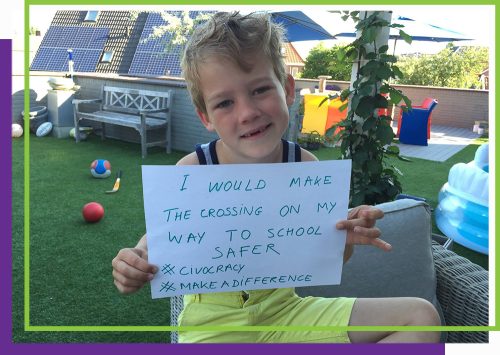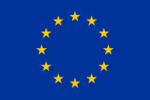
Civocracy is a comprehensive digital participatory platform active in four European countries- Netherlands, France, Germany, and Spain, which provides participatory tools and approaches for citizens to engage in consultation and projects at various levels of government, as well as in private contexts. The different participative and informative modules, the customisable services and the subscription model are all featured on the platform. Civocracy emphasises the importance of strategic framing, effective communication, as well as the challenges and successes of civic engagement processes, mainly through digital tools. Its main strength is the adaptability of the modules, as well as the additional services offered in terms of offline engagement and communication throughout the participatory process development. Civocracy provides valuable insights into the world of digital civic engagement and the importance of cultivating a participative culture and governance in launching successful projects.
Civocracy was developed with an initial vision of providing citizens a safe space to share opinions, ideas, and participate in projects. This need, however, arose also from the impact of social media dynamics and raised challenges related to authenticity, safety, and influence of algorithms.
In response to these challenges, Civocracy, along with other civic tech organisations, aimed to counteract solutions that might compromise the authenticity or safety of civic participation. This means that the emergence of civic tech tools has become essential in the face of the above-mentioned impact of mainstream social media platforms.
Importantly, digital tools are viewed as beneficial for individuals who may feel more secure expressing their opinions online, particularly those who are reserved or uncomfortable in traditional face-to-face meetings. Additionally, on-site events are often targeting the same “usual suspect”, while digital tool allows more accessibility and inclusiveness.
Emphasis is placed on the necessity of a robust moderation system to ensure the appropriate use of contributions.
There’s an acknowledgment that citizen participation in administration is crucial. However, there’s a notable gap in maturity and willingness among different countries. The tension arises from a fear of losing control, particularly in the political sphere, when giving citizens a more significant role in decision-making processes.
Two examples from France and Germany are mentioned here. In France, there’s an observable trend where certain administrations are increasingly compelled to seek citizen opinions, such as when planning infrastructure like a new bike lane. This reflects a growing recognition of the need to involve the public in decision-making processes. In Germany, however, the facts hint at a more cautious or reserved approach to embracing citizen participation.
The discussion expands to include the role of non-governmental organisations (NGOs) and companies. NGOs, being familiar with social media, are recognising the limitations of traditional platforms, especially when seeking influence on legislative matters. They urge a shift towards using more legitimate, safer, and controlled civic tech tools for impactful engagement. Furthermore, the need for authenticity, safe content, and qualitative contributions becomes apparent, particularly when engaging with bodies like the European Commission.
Despite the fact that digital solutions are advantageous, they should be regarded as complementary to on-the-ground initiatives rather than a standalone solution.
The pricing structure for Civocracy’s services is tailored to the specific needs and size of the client, whether they are companies, administrations, or NGOs.
The pricing varies depending on factors such as the size of the organisation. For smaller administrations or organisations, the cost may be lower. Initially, there is a higher cost due to the setup process, training, and minimal framing. However, as the client continues to use the platform over the years, the cost tends to decrease. Civocracy, being a small team of 10 people, values and protects its time. The platform itself is flexible and quick to set up, making it cost-effective.
The pricing for the platform typically ranges from a few hundred to over a thousand euros per month. Larger administrations or companies might fall into the higher end of this range.
The participants are on two different levels: the clients, who could be Public Administrations, NGOs, as well as private companies that ask for the implementation of Civocracy tools; and the actual participants of the participatory process who are targeted based on the context and objectives.
The success of civic engagement initiatives through digital tools is contingent on understanding the unique dynamics of each project. It underscores the importance of adapting strategies based on the specific topic and the characteristics of the client, emphasising a tailored approach for effective public participation. In this regard, while having a well-designed platform is essential, effective communication accompanied by the right narrative, storytelling, and targeted channels to reach the specific audience intended for contribution is equally crucial.
Civocracy provides services that go beyond just the creation of participative platforms. It plays a pivotal role in guiding clients to develop appropriate communication strategies tailored to their specific goals. This involves helping clients craft compelling narratives and ensuring that the communication channels chosen are well-suited to reach the intended target audience and to achieve the goal of the participative campaign (regarding the nature of contributions expected).
Civocracy’s digital platform encompasses various participative and informative modules, including questionnaires, discussion and debate tools, quizzes, and the idea box which serves as a space for users to post ideas. The tools are customisable, allowing organisations to adapt formats to suit their specific needs, such as transforming an idea box into a testimony space or a gratitude wall. Participants can interact by posting, supporting, voting, and more.
Beyond the participative modules, the digital space includes sections for events, resources, and news. The news feature operates akin to a newsletter, encouraging participants to subscribe and administrators to regularly share updates about the project. This facilitates long-term engagement, encouraging users to return, contribute to new modules, and explore results reports.
The platform’s admin dashboard provides essential statistics, tracking visits, and contributions. In addition to the tool itself, Civocracy offers a range of adaptable services to meet the diverse needs of clients. These services include communication and marketing strategies, governance development, participative campaign support, and the complete setup, including narrative building and page design. Services extend through the consultation process, including result analysis and report creation.
The flexibility of the services allows clients to choose support based on their level of familiarity with the tool and their specific requirements. The emphasis is on providing a customisable and comprehensive set of tools and services to enhance and facilitate civic engagement strategies tailored to each client’s unique needs.
When a client subscribes to Civocracy’s digital platform, it typically involves a subscription model, usually for a year, renewable annually. The subscription provides access to all modules within the platform as long as the client continues to pay for it. However, it’s crucial to note that Civocracy emphasises the importance of strategic framing services as a minimum requirement. These services, provided by Civocracy, assist clients in planning and designing their participatory processes effectively. This strategic framing is considered essential to prevent potential issues, such as launching too many modules simultaneously, ensuring the platform is used appropriately.
Civocracy’s civic engagement process is a continuous evolution, shaped by feedback and observations. Once the platform is set up and services are initiated, regular follow-up meetings with clients are held to make necessary adjustments. This includes refining communication strategies, exploring new channels, and adapting approaches to maintain participation rates, or even boost them – for the campaign to go even more viral and multiply its impact.
The addition of the quiz module, designed for interactivity and a lighter touch, showcases Civocracy’s commitment to adapting to evolving needs. While modules have their original functions, they remain flexible and customisable. For example, though participative budgeting isn’t an official module, cities have successfully utilised the platform for such consultations by leveraging customisation options.
Observations over the years reveal the power of offline, eye-catching communication methods. High-impact, colourful posters or flyers strategically placed, such as on bus stops, prove highly effective in driving traffic to the consultation module. Combining online and offline approaches is key, with visible offline elements creating a sense of urgency and participation.
Strategic framing is a focal point for Civocracy, emphasising discussions with clients from the project’s inception, including setting up the appropriate goals/KPIs for the campaign, building up a strong governance around it, and insuring the potential of virality of the participative initiative. This ensures alignment of goals, tailoring modules to specific needs, and maximising contributions. The process involves dynamic interplay between client input, platform features, and ongoing adjustments, culminating in effective civic engagement.
Implementers are advised against keeping consultations open for extended periods to prevent participant fatigue, similar to social media campaign dynamics. Sharp and well-timed consultations are recommended. Additionally, Civocracy discourages extensive questionnaires with numerous questions, emphasising the need for brevity to maintain participant engagement.
In the journey of launching a successful project on Civocracy, three pivotal factors come to the forefront, with a resounding emphasis on cultivating a participative culture.
First and foremost is the imperative need to instil a participative culture. Initiating a project requires a patient building knowledge and understanding among participants unfold gradually. The expectation of swift adoption and a surge of participants within a short span is unrealistic. It demands a thorough explanation of the initiative’s purpose, a nuanced understanding of individual contributions, and transparent communication about intentions and anticipated outcomes. This gradual development of a participative culture is applicable across various organisational landscapes, be it in a corporate setting, within an administration, or among NGOs.
The second crucial facet revolves around governance. From the project’s inception, assembling the right individuals for strategic planning is crucial. Participative campaigns often unfold as long-term, multi-faceted initiatives, necessitating a well-defined governance structure. Clear delineation of roles and responsibilities ensures that every participant comprehends their contribution to disseminating awareness, orchestrating consultations, sharing content, and sustaining engagement over the project’s duration.
Lastly, effective communication emerges as an equally vital factor. Civocracy underscores the significance of clear and impactful communication throughout the project’s lifecycle.
Civocracy platform provides valuable insights into the potential of digital civic engagement, but it also raises critical questions about the tool’s effectiveness and inclusivity. It acknowledged the challenge of participant fatigue, and the maturity and willingness among different countries regarding citizen participation. While digital participation platforms offer individuals who are hesitant to express their thoughts in person a viable space to share opinions and proposals, they also raise concerns about equity and accessibility, particularly in disadvantaged and socio-economically critical contexts. This requires an additional effort to organise in-person activities in parallel. Therefore, while the Civocracy platform offers promising features, it is essential to critically assess its impact on inclusivity and equitable civic participation.
Based on an interview conducted with Marine Lesaint (marine@civocracy.org), Civocracy’s digital engagement management on 17 January 2024.
Mobilisation around the high schools – “Mission Lycées” – Auvergne-Rhône-Alpes region (France).
Consultation around the culture offer – “Wir machen die kultur” in Lahr (Germany).
Participative budget in Haldensleben (Germany).
Participative campaign around ocean protection in EU – “It’s Bluedy Time Europe!” by Surfrider Foundation Europe.

This project has received funding from the European Union’s Horizon 2020 research and innovation programme under grant agreement No 959420.